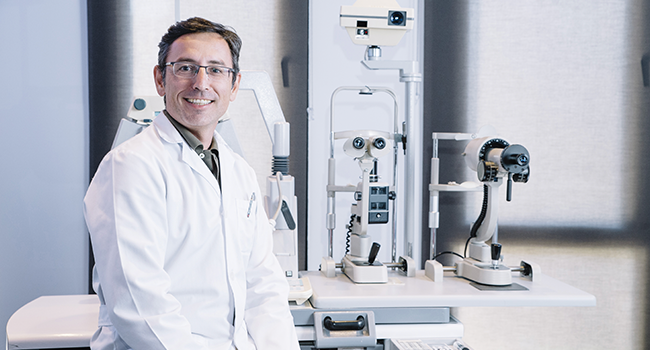Exactly How an Eye Doctor Can Transform Your Vision Health in Chino
Exactly How an Eye Doctor Can Transform Your Vision Health in Chino
Blog Article
Discovering the Latest Technological Developments in Optometry and What They Mean for Optometrists
In the ever-evolving area of optometry, current technical improvements are improving just how practitioners approach eye care. From the precision of Optical Coherence Tomography to the nuanced insights provided by AI-driven analysis devices, these advancements are establishing brand-new criteria in person analysis and therapy. Teleoptometry is poised to redefine access, guaranteeing that know-how transcends geographical limitations. As these improvements permeate the technique, eye doctors are confronted with the challenge of accepting these devices to enhance client results. Yet, the question stays: exactly how will these technological shifts redefine the roles and responsibilities within the profession?
Technologies in Diagnostic Tools
Advancing the area of optometry, technologies in analysis devices have reinvented the way eye care specialists assess and detect eye problems and aesthetic disabilities. The previous decade has actually experienced substantial technological innovations, enabling more thorough and accurate assessments.
Another trick advancement is the introduction of sophisticated corneal topography systems, which map the surface area curvature of the cornea with precision. These devices are particularly beneficial for suitable contact lenses and identifying corneal disorders. Moreover, digital retinal imaging has transformed standard ophthalmoscopy, providing thorough, panoramic views of the retina that help with thorough visual exams.
The development of wavefront aberrometry has likewise been crucial, making it possible for the evaluation of refractive mistakes with unmatched precision (Eye Doctor). This innovation helps in personalizing restorative lenses and boosting medical end results for refractive surgeries. Jointly, these analysis innovations empower eye doctors to deliver remarkable individual treatment, ensuring early intervention and tailored therapy approaches, ultimately improving aesthetic health and wellness results
AI in Individual Administration
Structure on the foundation of cutting-edge analysis tools, the consolidation of artificial knowledge (AI) in individual monitoring stands for a transformative jump for optometry. AI systems are progressively employed to enhance efficiency, precision, and customization in patient care. By analyzing substantial quantities of information, AI can determine patterns and anticipate potential eye conditions, allowing optometrists to customize treatments better. This capability is crucial in handling chronic eye diseases such as glaucoma and diabetic person retinopathy, where early discovery and constant tracking are key.
Furthermore, AI-driven platforms assist in streamlined person communications and management procedures. Automated scheduling, online examinations, and personalized follow-up strategies not just improve patient contentment but additionally maximize time management for experts. These systems can triage clients based on the necessity of their conditions, making sure that those in vital demand receive timely interest.
In addition, AI enhances decision-making by offering optometrists with evidence-based referrals and therapy pathways. By integrating data from electronic wellness documents, AI devices offer insights that notify professional choices, reducing the danger of mistakes and boosting person end results. As AI proceeds to advance, its role in individual administration will likely increase, improving the landscape of optometric treatment.
Breakthroughs in Retinal Imaging
In the world of optometry, retinal imaging has actually witnessed remarkable technical innovations that are improving diagnostic capabilities and patient treatment. Developments such as Optical Coherence Tomography (OCT) and fundus digital photography have transformed how eye doctors imagine and assess the retina.
Enhanced imaging techniques like OCT angiography are more refining diagnostic accuracy. Eye Doctor. Such improvements facilitate the identification of min retinal adjustments that could symbolize condition progression.
In addition, improvements in synthetic knowledge are boosting retinal imaging by making it possible for automated analysis of huge datasets. These systems assist optometrists in determining patterns a measure of pathology, thereby improving diagnostic precision and performance. Jointly, these innovations are transforming retinal imaging right into a cornerstone of modern eye care, enhancing results and broadening healing opportunities.
Teleoptometry's Expanding Duty
Teleoptometry is increasingly becoming a vital component of eye care, driven by advancements in data and analysis devices. As optometry welcomes electronic improvement, teleoptometry assists in remote examinations, permitting eye doctors to prolong their services beyond traditional boundaries. This is specifically advantageous in rural and underserved locations where accessibility to specialized eye care is typically restricted. By leveraging high-resolution video conferencing and progressed retinal imaging, eye doctors can carry out extensive eye exams from afar, guaranteeing timely medical diagnosis and therapy.
The assimilation of man-made intelligence (AI) more improves teleoptometry, making it possible for the evaluation of visual information and aiding in the discovery of ocular problems such as glaucoma and diabetic retinopathy. AI-powered formulas can swiftly analyze complex imaging information, offering eye doctors with important understandings that reinforce clinical decision-making.
Additionally, teleoptometry supports connection of care with seamless combination with digital health and wellness documents (EHRs), allowing eye doctors to maintain detailed patient backgrounds. When seeking advice from with different professionals., this ensures that clients obtain consistent and customized treatment also.
In spite of these advantages, difficulties continue to be, including making sure information protection and managing client assumptions. However, teleoptometry represents a considerable stride in the direction of even more accessible, efficient, and patient-centered eye care. As modern technology evolves, its function is poised to expand even more.

Future Patterns in Eye Care
A myriad of ingenious trends is readied to reshape the future of eye treatment, driven by technical improvements and the advancing requirements of individuals. One considerable trend is the integration of expert system (AI) in diagnostics, which assures to improve the precision and reference efficiency of eye exams. AI formulas can examine large amounts of information from retinal pictures, potentially discovering conditions like diabetic person retinopathy and glaucoma earlier than standard techniques.
Furthermore, personalized medication is acquiring grip in optometry, with genetic screening informing personalized treatment strategies. This strategy aims to optimize person results by customizing treatments to private genetic accounts. Wearable technology, such go to this website as clever call lenses, is likewise coming up, using real-time monitoring of intraocular pressure or glucose levels, hence providing constant understandings right into ocular and systemic health and wellness.
The fostering of enhanced fact (AR) and online truth (VR) in training and client education is an additional emerging pattern. These innovations use immersive experiences that can enhance understanding and skills both for optometrists and patients. As these fads develop, optometrists need to remain abreast of technological advancements to supply sophisticated care, making sure better client outcomes and contentment in the dynamic landscape of eye care.
Final Thought

Jointly, these diagnostic developments empower eye doctors to provide exceptional patient treatment, making sure early treatment and tailored therapy approaches, eventually improving aesthetic health and wellness outcomes.

As these innovations proceed to develop, eye doctors must adapt and integrate them right into practice, eventually optimizing process performance and elevating the standard of eye treatment supplied to patients.
Report this page